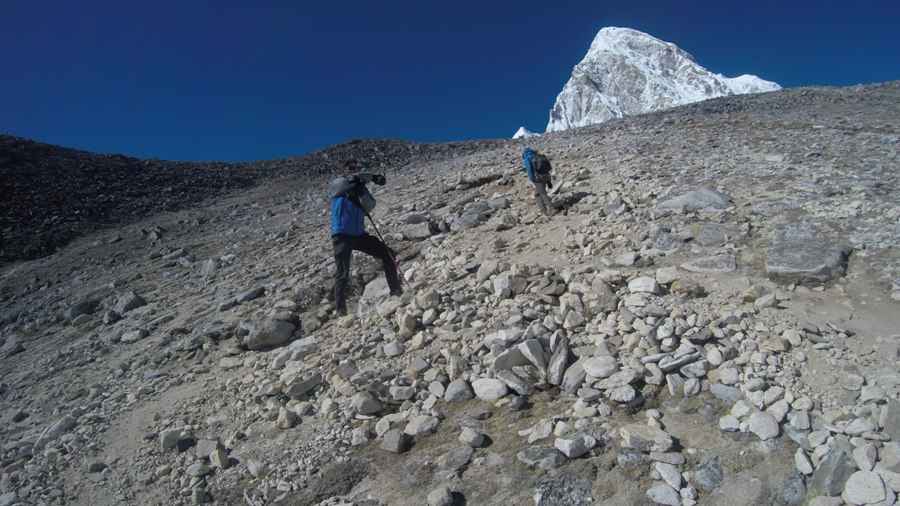Have Questions? Ask Expert
+9779851065082
Trekking in Nepal 2026 packages
skylineFebruary 8. 20253 min

Trekking in Nepal is an incredible experience, offering some of the most breathtaking landscapes and diverse cultures in the world. Nepal is home to the Himalayas, including Mount Everest, and boasts a variety of trekking routes for all levels of adventurers.
Here’s a guide to help you plan your trekking adventure in Nepal:
Popular Trekking Routes in Nepal
- Everest Base Camp Trek
- Duration: 12–14 days
- Highlights: Stunning views of Everest, Sherpa culture, Namche Bazaar, Tengboche Monastery.
- Difficulty: Moderate to challenging.
- Annapurna Circuit Trek
- Duration: 15–20 days
- Highlights: Diverse landscapes (forests, terraced fields, high mountains), Thorong La Pass, Muktinath Temple.
- Difficulty: Moderate to challenging.
- Annapurna Base Camp (ABC) Trek
- Duration: 7–12 days
- Highlights: Panoramic views of Annapurna range, Machhapuchhre (Fishtail Mountain), hot springs in Jhinu Danda.
- Difficulty: Moderate.
- Langtang Valley Trek
- Duration: 7–10 days
- Highlights: Close proximity to Kathmandu, Tamang culture, Langtang National Park, and Kyanjin Gompa.
- Difficulty: Easy to moderate.
- Manaslu Circuit Trek
- Duration: 14–18 days
- Highlights: Remote trails, Tibetan-influenced culture, Larkya La Pass, and stunning views of Manaslu.
- Difficulty: Challenging.
- Upper Mustang Trek
- Duration: 10–14 days
- Highlights: Desert-like landscapes, ancient Tibetan culture, Lo Manthang, and cave monasteries.
- Difficulty: Moderate.
- Ghorepani Poon Hill Trek
- Duration: 4–7 days
- Highlights: Short and scenic trek, sunrise views from Poon Hill, rhododendron forests.
- Difficulty: Easy.
Best Time to Trek in Nepal
- Autumn (September–November):Clear skies, stable weather, and excellent visibility. This is the most popular trekking season.
- Spring (March–May): Pleasant weather, blooming rhododendrons, and great mountain views.
- Winter (December–February): Cold at higher altitudes, but lower treks like Ghorepani Poon Hill are still manageable.
- Monsoon (June–August): Not ideal due to rain, landslides, and leeches, but Upper Mustang and Dolpo are good options as they lie in the rain shadow.
Tips for Trekking in Nepal
- Permits: Most treks require permits (e.g., TIMS card, national park entry permits). Check the requirements for your chosen route.
- Guides and Porters: Hiring a guide or porter is recommended, especially for challenging treks. They provide valuable support and local knowledge.
- Physical Fitness: Prepare yourself physically and mentally. Regular exercise and hiking practice will help.
- Packing Essentials: Pack warm clothing, sturdy trekking boots, a good sleeping bag, sunscreen, a first-aid kit, and a reusable water bottle.
- Altitude Sickness: Acclimatize properly, stay hydrated, and ascend slowly to avoid altitude sickness.
- Respect Local Culture: Be mindful of local customs, dress modestly, and ask for permission before taking photos of people.
Why Trek in Nepal?
- Stunning Scenery: From snow-capped peaks to lush valleys, Nepal offers unparalleled natural beauty.
- Cultural Diversity: Experience the unique traditions of Sherpa, Tamang, Gurung, and other ethnic communities.
- Affordability: Trekking in Nepal is relatively affordable compared to other destinations.
- Adventure: Whether you’re a beginner or an experienced trekker, Nepal has something for everyone.
If you’re planning a trek, let me know which route you’re considering, and I can provide more specific advice! 